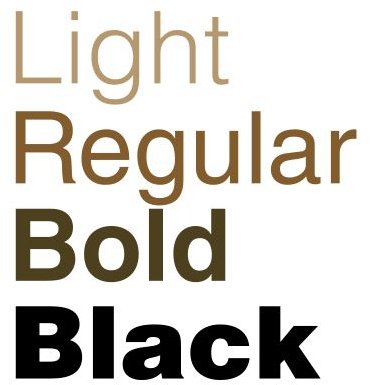A Guide to Careers in Desktop Publishing
The Way Things Used to Be
A couple of decades ago—even less than that!—if someone wanted letterhead for his company or a new brochure for a specific program or event, you sketched out his ideas and then presented your design concept. The client would approve your work and then you would transform it into artwork with a message. He paid you an arm and at least part of a leg to get the finished product delivered to his office. Letterhead and logo design was so expensive that once something was settled on, it stayed the same for years.
Desktop publishers also arranged newspaper and magazine layout, formatted photos for marketing or advertising campaigns, or set out catalog design. Just about any printed thing in any home or office, a desktop publishing guru had a hand in it.
From Yesterday to Today
Employability in this field has suffered not because of the economy but because of technology. Computer software more and more

allows the average guy (or gal) to stumble through the creation of his own printed images and words.
In a converse twist, the same touches of technology offer inspiring new applications for products waiting to be designed. Who will say no to a website awhirl with dynamic graphics?
These days, there are still jobs available for desktop publishers. However, instead of working at a print and design firm that supplies corporate clients with catalogs, brochures, or stationery, many artists will work directly for the same corporate clients, absorbed into the corporate structure to meet its design needs from within. Materials designed in-house come at a much lower cost for the hiring company. Sometimes that work alone will not keep a person employed full-time, so the savvy DTP person makes himself indispensable by assimilating and offering a variety of skills.
What about the people who foretell doom and gloom for the DTP industry? Are their worries valid? The following articles address those negative outlooks yet find a way to shine some light on the future.
Are Desktop Publishing Careers Designed to Die a Slow But Certain Death?
Just ten years ago, the U.S. Bureau of Labor Statistics identified desktop publishing among the fastest growing fields. What happened? Computer graphics have advanced at a rapid pace, and the artistry that used to be the sole venue of the graphic design artist became possible for everyone with a desktop and a mouse. Many people are predicting that graphic artists—who are nothing if not imaginative—will redesign their careers. The next big thing to watch for will be the visual communicator.

Careers in Desktop Publishing: Printing Jobs
About one-quarter of all desktop publishing professionals find work in the commercial printing industry. New technologies allow printing shops to create lithographs without the old, cumbersome equipment. Many people find jobs in screen printing shops, making posters and t-shirts.
Graphic Art Versus Graphic Design: Are They the Same?
Read this viewpoint from a hands-on graphic artist and educator who believes that the work of a graphic designer falls within the broad category of graphic art. A graphic designer performs tasks such as page layout or brochure design. An illustrator conveys the essence of a writer’s words by creating an image. A graphic artist could do either. Where do your skills put you?
A Rapidly Changing Field
If this is the career you love, you’ll do anything to stay in it. Refuse to believe the rumors you hear that DTP is a dead-end career! Bright Hub’s DTP and graphic design career experts say there are ways to refocus your skills so that you can remain employable. The key, of course, is to specialize, specialize, specialize! When you choose educational options, you must look at training that will set you above competitors in the field.
After all, while managers at many firms like to think they have become quite the proficient do-it-yourself desktop publisher, they get stumped if they have to switch from a PC to a Mac. They don’t know the difference between scalable vector graphics and geographical primitives. What can you do to make yourself a truly indispensable part of a company’s graphics department?
3 Effective Ways to Get More From Graphic Design Courses
Graphic artists who want to remain active in the field should keep up on layout and graphic design, fonts, and design software. It’s wise

to learn applications for both PCs and Macs and become proficient at a variety of photo and web design applications.
How to Make a Living in Digital Graphic Design
Despite downturns in projected employment for traditional graphic artists and desktop publishing, you can still find exciting career options. Digital graphic design artists find work in digital photography restoring vintage photos. Artists who specialize in design elements find work in the print media working at fashion magazines and movie companies. Web and package design are other options.
Your Graphic Design Price List: What Should You Charge?
If you’ve chosen the freelance option, find out here how to arrive at an hourly or per-job rate of pay. Actually, you won’t be able to set per-job rates until you calculate how much time and labor you put into a project in the first place. This article gives you some ideas on that and also suggests per-job rates for logos, brochures, posters, and more.
Viewpoints About Video Graphics
The art technologist stymied by the steep decline in traditional desktop or graphics design work will find doors opening in the exciting challenges of video graphics and graphic artist animation. From new ventures in old fields like advertising and marketing, to old techniques like letter boarding for new-style movie credits, there is something to keep the adventurous video artist busy.
Learn how to create special visual effects—in static and dynamic digital images or even in film. Become proficient in 3D technology. Get to the top of your field and become responsible for supervising a team of illustrators, animators, and layout designers. Create and oversee videogame design—how’s that for a dream job?
Online Bachelor’s Degree in Visual Communication
Today’s technologies make it possible for working artists to further their education by taking classes online. Earn as you learn, with a bachelor’s degree program that will fit around your schedule at work. Specialize in industrial design. Learn advanced image editing. Study web design. The future is at your fingertips.
A Word About Website Design

The real changes in this field have come with the advent of web design. It’s something that our brothers of two decades ago didn’t even dream about, and it’s here to stay. A website is a place where you can put your best skills on the line, combining interactive communication tools with both static and streaming graphics.
Right now we are fascinated by the use of colors and the ability to bend and alter images; but wait till display holographics become a commonplace reality. If you think that’s far-fetched, remember that holographs are already commonplace in videogame technology.
Web Design: Freelance Graphic Designer
If you love graphic design but you haven’t found a niche with just one company, why not work for many companies? Once you start a portfolio and pin down a couple of clients, you’re on your way. The money you make really is relative to the amount of work you put into it.
Understanding Website Development Careers: How Much Graphic Design Should You Know?
Again, the focus is on expanded or specialized skills. Companies want to save money by hiring an artist who also understands code like CSS or HTML. They want someone who knows Corel, Dreamweaver, Adobe products, Quark, and more. That’s where you come in.
How Much Does a Web Designer Make?
Pick your groove in the industry here; you can earn from $25,000 all the way up to $100,000 and beyond. If you work for yourself, you can charge from $500 to $1,000 per job—grossing up to $100,000 if you do a hundred jobs a year. On the other hand, working for a company will net you fringe benefits like health insurance and paid time off, but you’ll do far more jobs for much less pay.
Do you think you know your stuff? Take this quiz to get an idea how much knowledge you’ve actually accrued in this far-reaching field.
How Do You Feel About Your Career Now?
Do you still feel like DTP is a dying field? I hope by now your enthusiasm is soaring! You should realize that while some doors are closing, others are opening wide, and the sky really is the limit! I’d like to know what obstacles you stumble across in your search for work that rewards you, both emotionally and monetarily. Are educational options open to you? If you find a useful resource, please share it with us here; and if there’s specific information you need, let me know and I’ll try to find it.
References
- Images
- sxc.hu, ba1969, royalty-free license
- Marketing brochure image by the writer.
- Prism Concepts by Jen, used with permission
- sxc.hu, saine, royalty-free license
- sxc.hu, ilco, royalty-free license
- Image: Helvetica Light Type by Dancojocari under public domain
